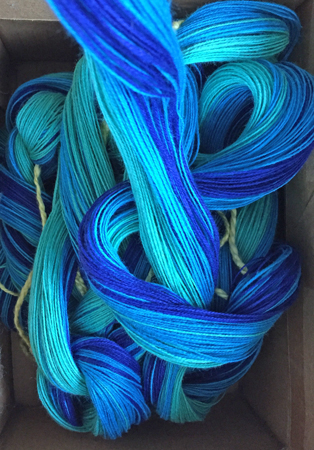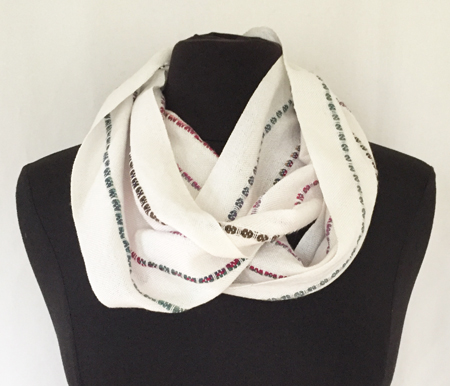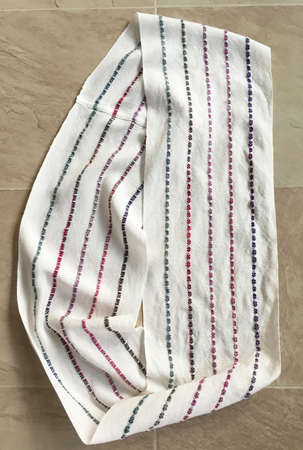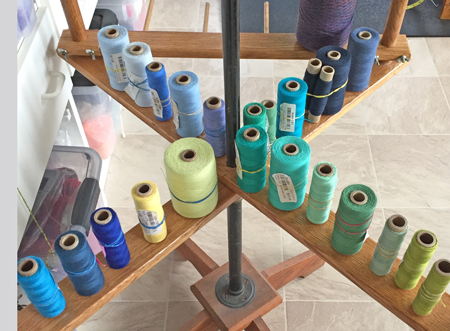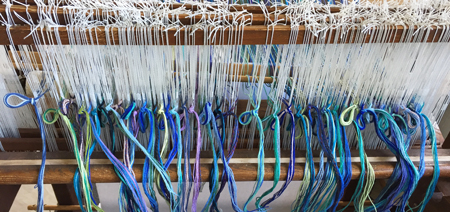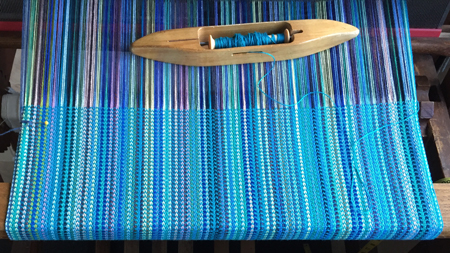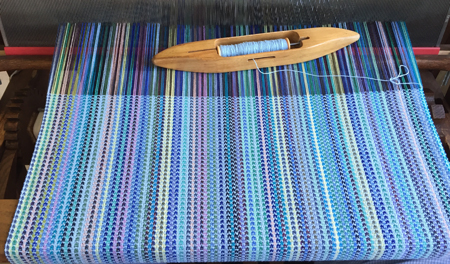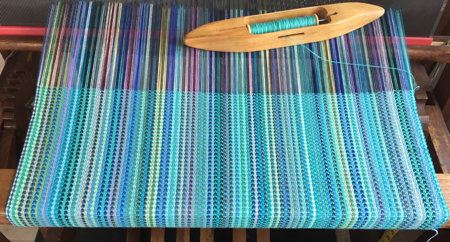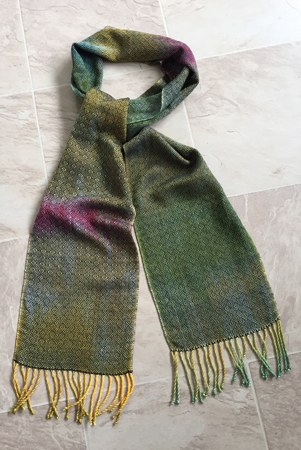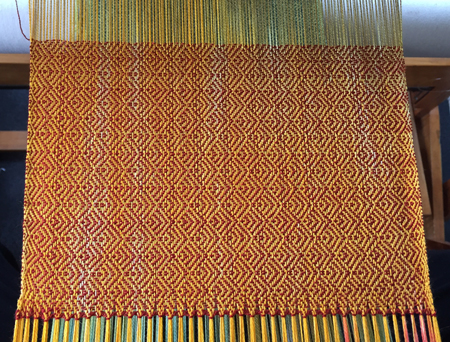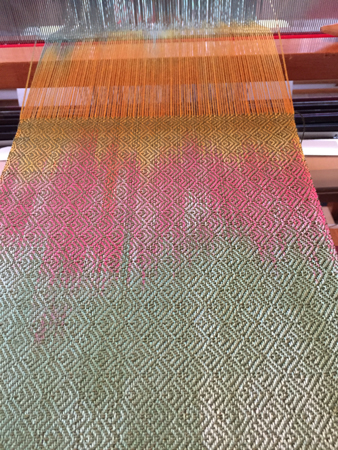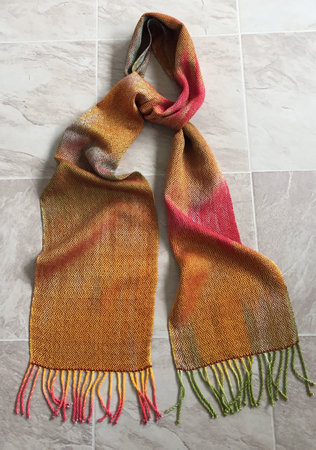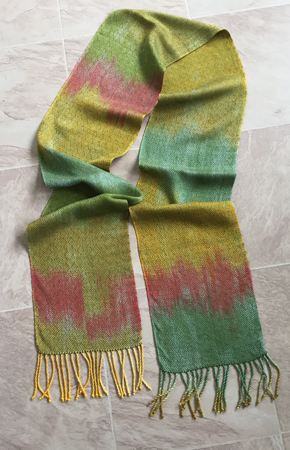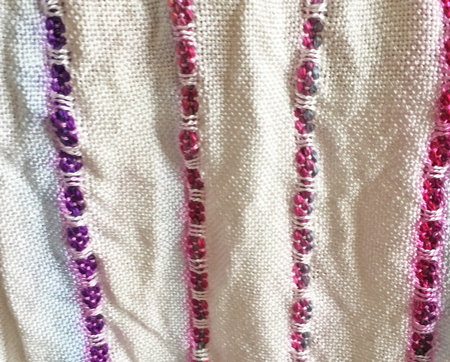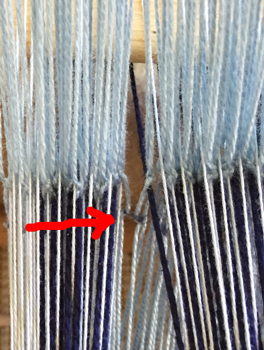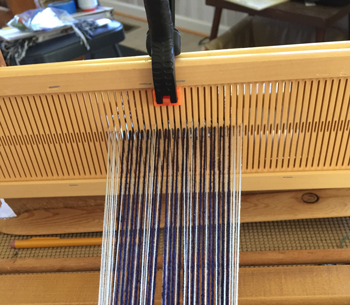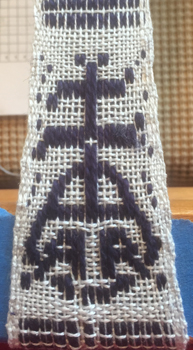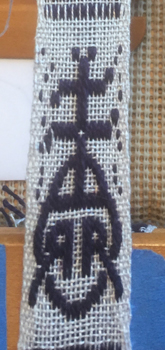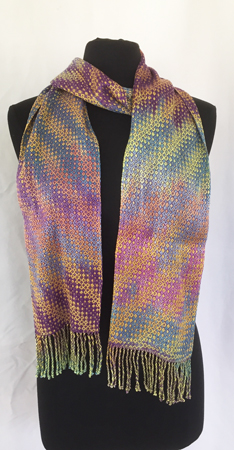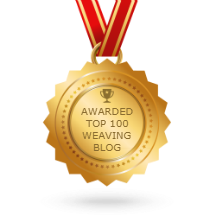I have friends who have long commented on the fact that I am a multi-tasker and they are not. Despite the fact that I know what all the studies say, that multi-tasking is not efficient, I’ve been doing this since long before that term was coined, and I’m unlikely to stop now.
So here goes…
I got the 8 bumberet towels woven, each with a different weft color.
They all still need to be hemmed and wet finished. I learned from this batch of towels that I like the previous 13-14 colors better than this warp, which is at least 18, maybe 19 colors.
It should come as no surprise to me (but it always does), the 2 remaining blue bumberet from my first batch and the 6 oranges attracted virtually no attention at last weekend’s show. Then again, very little did. The show was poorly attended.
I got an order for a custom baby wrap…my first in many months. So I want to get this woven up and out the door for the moms as soon as possible. Here’s bout 1 on the warping mill.
And bout 2 chained and in the box.
How yummy is that?!
Meanwhile, after much shilly-shallying (how’s that for an ancient phrase?), I decided I want to make a hand-painted tencel warp for my rigid heddle loom for my demo at the show next weekend. Of course, I don’t have such a warp prepared. So I measured out enough length for 2 scarves to hand paint, plus 2 small skeins, each to dye in a solid coordinating color. I’m going to get this done in between the baby wrap, ‘cuz I sometimes need a change of scenery/activity. No pix of the plain white 10/2 tencel. 😉



